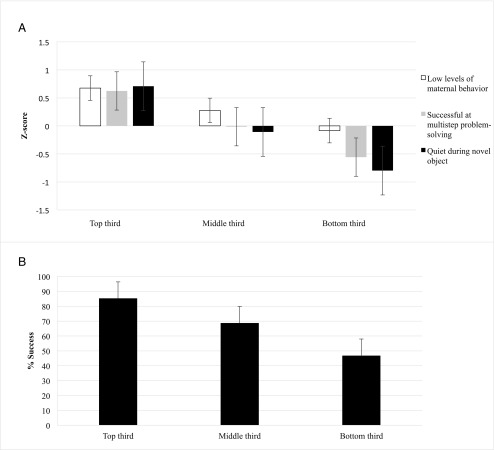Fig. 1.
Relation between dogs’ scores on three behavioral measures (A) and their success in the program (B). (A) Dogs were ranked according to their scores on the three behavioral measures that most strongly predicted outcome (low levels of maternal behavior, good performance on young adult multistep problem solving, and slow latency to vocalize to a novel object as a young adult) and then divided into thirds (top third, n = 34; middle third, n = 32; and bottom third, n = 32) based on the sum of their ranks. (B) Same dogs’ mean percentage of success in The Seeing Eye program, calculated by group, is depicted. Error bars represent the SEMs.

